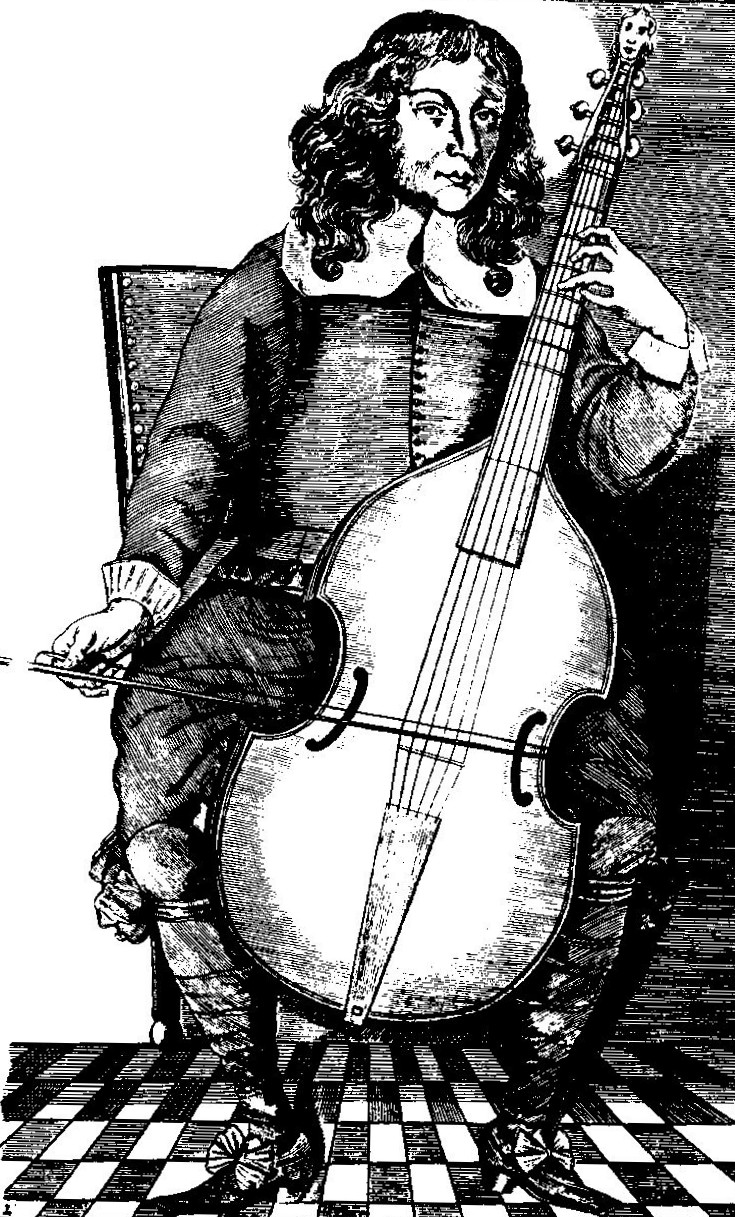
The viol – or viola da gamba, to give it its Italian name – is a type of musical instrument that enjoyed great popularity during the Renaissance and Baroque periods, roughly 1550 to 1750.

Despite a superficial resemblance to the cello, the viol is not directly related to the instruments of the violin family. Its closest relatives are the lute, which flourished in the same period as the viol, and the guitar, which of course survives to the present day. These instruments are the viol's cousins in an ancient family of instruments of Moorish origin.
Like the lute and guitar, the viol lends itself to chordal playing. Double stopping is commonplace even in very early repertoire and arpeggiated chords of up to six notes are not uncommon. The six strings of the standard viol, tuned in fourths and one major third, with the highest and lowest strings two octaves apart, and passing over a fretted fingerboard, also indicate the viol's common ancestry with the plucked instruments.

Together with the recorder, harpsichord and other early instruments, the viol died out at the end of the Baroque period, as the modern symphony orchestra began to develop. All of these early instruments are now enjoying a reawakening amongst musicians, audiences and instrument makers who enjoy the music of the Renaissance and Baroque and wish to hear it played on the instruments for which it was written. Much of the later solo repertoire for the viol is, in any case, so idiomatic to the viol that is is simply not accessible to other instruments.
Our group, the Cambrian Consort, specialises in consort music for viols. Consort music is essentially a Renaissance style of composition, although some composers, notably Henry Purcell (1659–1695) continued the tradition until almost the end of the seventeenth century. Consort music is best understood as an offshoot of Renaissance vocal polyphonic music. As such it requires a “choir” of similar but different sized instruments to represent the soprano, alto, tenor and bass voices. Consort music is invariably played one to a part.
As well as viols, consort music was written for recorders (of the large-bored Renaissance type) or for combined cornetts (for the high parts) and sackbutts (for the low parts). The viol, the recorder and the cornett have very different characters, but it is no coincidence that they were each considered, by contemporary writers, to have a remarkable “vocal” quality to their sound. Interestingly, these instruments can tell us something about the quality of singing that is appropriate to Renaissance and Baroque performance in general, and to polyphonic music in particular.
Variations in consort playing include the “broken consort” in which suitable consort repertoire (often dances) are played on a “consort” of dissimilar instruments, and also the “consort song” in which one part is sung, and the other parts played on viols. Most commonly the consort song is composed for four viols and a high voice, either a boy, or a soprano capable of singing without vibrato.